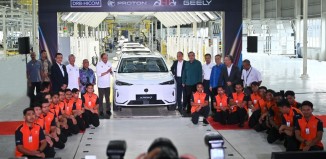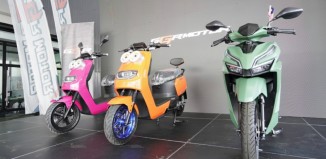Volvo Spreads Safety Message To Children Via KidZania In Malaysia
 Volvo Car Malaysia, in collaboration with Volvo Malaysia (aka Volvo Trucks), is aiming to spread the message of safety awareness directly to children through roadshows at various schools as well as its latest initiative in setting up a Volvo establishment in KidZania Kuala Lumpur.
Volvo Car Malaysia, in collaboration with Volvo Malaysia (aka Volvo Trucks), is aiming to spread the message of safety awareness directly to children through roadshows at various schools as well as its latest initiative in setting up a Volvo establishment in KidZania Kuala Lumpur.
Volvo has made a firm commitment that by year 2020, no one will be seriously injured or killed in a brand new Volvo car. But technological innovations can only go so far in protecting the car’s occupants if they’re not securely and correctly fastened to the seats by the three-point seat belt.
You can drive a million Ringgit car with state-of-the-art active and passive driving safety features, but they’re mostly useless when you’re flung out of the car or slammed against the airbag, or the front seat backrest.
Incidentally, it was a Volvo engineer who came up with that ever-important three-point seat belt. Volvo saw the big picture of the seat belt being a crucial life saver in automobile accidents and hence decided to forgo patent revenue by giving it to every car maker.
While some adults question the necessity of being securely fastened in a car (particularly their children), the same adults should also question their ability to predict and avoid accidents.

 Thus, Volvo’s objective in this is to drive home that important message of safety to the children, with the hope that this will filter up to the parents/guardians. The message isn’t just about wearing a seat belt in the car (whether in front or in the rear), but to wear it correctly, especially for children; which means using the correct child or booster seat to avoid serious injury.
Thus, Volvo’s objective in this is to drive home that important message of safety to the children, with the hope that this will filter up to the parents/guardians. The message isn’t just about wearing a seat belt in the car (whether in front or in the rear), but to wear it correctly, especially for children; which means using the correct child or booster seat to avoid serious injury.
 “I believe that all parents would want to protect their children to the best of their ability but there exists a lot of misconception of what is considered safe. Our safety campaign aims to better educate the parents and inculcate good safety habits in children,” said Lennart Stegland, Managing Director of Volvo Car Malaysia.
“I believe that all parents would want to protect their children to the best of their ability but there exists a lot of misconception of what is considered safe. Our safety campaign aims to better educate the parents and inculcate good safety habits in children,” said Lennart Stegland, Managing Director of Volvo Car Malaysia.
Volvo was also the first to test a prototype child seat in 1964 and introduced the first car seat adapted for children’s safety in 1967, as well as an industry-first rearward facing child seat in 1972.
The Volvo 240 “tank” was used by US agencies as a benchmark to formulate safety and crash test standards.You can learn more about in-car child safety from Volvo Car’s award-winning Children & Cars Safety Manual, available from download at volvocarmalaysia.com/childsafety
The manual explains the differences of front- and rear-facing child seats as well as the types of child restraints and safety for the mother and unborn child.
“We hope that the manual will provide enough information for parents and answers questions that parents might have about in-car safety for children, such as ‘what is the best place to place a child in a car?’ or ‘does a seat belt cause harm for mothers-to-be?'” added Stegland.


























